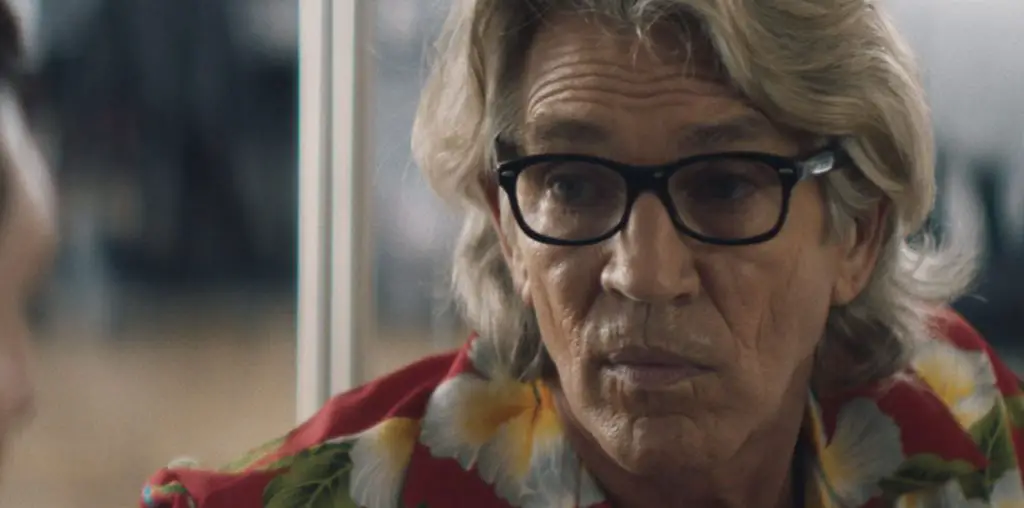
Ever watch a movie only to wonder if the experience had been some kind of alcohol-induced hallucination? Some projects just have the knack for jolting you awake. Usually, you wouldn’t expect a kind of surreal confrontationalism from a “CBS News Sunday Morning”-esque program shot aboard a cross-country bound RV. As filmmaker Arthur Bradford readily demonstrates in “How’s Your News?”, the effect is a little different when hosting duties shift from a now-dead Charles Kuralt to a team of five physically and/or mentally disabled adults.
Many folks won’t have a problem chuckling at the antics of “God’s little clowns”, particularly when they break into their, uh, enthusiastic theme song. It’s not nearly as offensive as you might believe, or even desire. Still, self-appointed guardians of decency and taste will be more likely inclined toward an aneurysm. In the “Jackass” millennium you might question the motives behind this kind of stunt, but Bradford never crosses the line. He’s known his charges since he taught a video production class at Jabberwocky; a camp in Martha’s Vineyard for adults with disabilities. The happy campers enjoyed it tremendously, particularly conducting man-on-the-street interviews. After a bootleg of these segments reached the hands of “South Park” creators Trey Parker and Matt Stone, a larger opportunity ensued.
Is the “How’s Your News?” team really being exploited? No more so than anyone else on network reality television. This is all a grand adventure for them. The cast of “Temptation Island” got a free trip to meet a lot of new people too, but only at the cost of a few unpleasant moral dilemmas. Our “correspondents” probably had more fun. How can you call that exploitive?
The real point here isn’t so much the producer’s intent as the public’s attitude. This is a full-frontal attack on a mindset. During the team’s many interviews only can see that only the “normal” people act uncomfortable, as is much of the population when confronted with the disabled at any level. Some are too self-absorbed to ever connect with our hosts, while others avoid contact altogether. Hope for mankind flourishes among the few who openly embrace the encounters. You never know what to expect.
There are a couple of significant problems. I did see an earlier cut and the differences to this one highlight a couple of issues. The first is focus. Going from place to place, the film becomes too episodic without ever building toward anything. Perhaps Bradford should have mapped out a more precise purpose and game plan before the trip, but even if he did, they would have been difficult to act upon. The main cast could only cooperate so much. For them, this was obviously a grand adventure and Bradford likely felt a strong responsibility that they had a good time.
The other problem involves certain creative decisions. The director avoided stylistic flourishes in favor of crafting an accurate portrayal of the journey’s experience. Unfortunately, Bradford omitted a significant aspect of this story, himself. Usually, a documentary filmmaker is right to edit out his own presence to better focus on his themes and subjects. The exception occurs when the director is a significant element of the story or subject. Bradford is needed in two ways. An intermediary with whom they’ve bonded could complete the cast’s connection to the audience impeded by their disabilities. With no family around, the logical choice is the man ultimately responsible for them, Bradford. The director should have also been heard setting up the film at the beginning. In the final edit, the audience never receives an explanation of the trip or what led to it. Currently, we only see short interviews with the group’s parents before the opening credits and shenanigans begin. This at least indicates Bradford had their legal consent to this magical mystery tour, but little else. The result is a needlessly awkward initial half-hour reportedly confusing many in the audience. A small voice-over in the beginning could have solved everything.
Don’t get me wrong here. Though inconsistent, much of the film is really good. It’s still damned funny with inspired visits to a livestock auction and an alligator farm. The peak is saved for the finale in Los Angeles. Believe me, if there’s one place in America that’ll welcome a bunch of idiots with a camera, it’s here. Actually, the journey ends at the ocean with the inhabitants of Venice Beach. As most locals already possess a tenuous grip on reality, our plucky stars feel as if they just arrived for a party in their honor. They actually BLEND. They even run across one low-level celebrity, writer/actor Vince Van Patten. Typically, Vince takes this opportunity to discuss his writer/star turn in his direct-to-cable film, “Break”. His purist Hollywood moment arrives with his cynicism-free description of this opus described as “‘Rocky’ on the tennis court.” In a special film about special people, that’s the one thing that sounds truly retarded.

